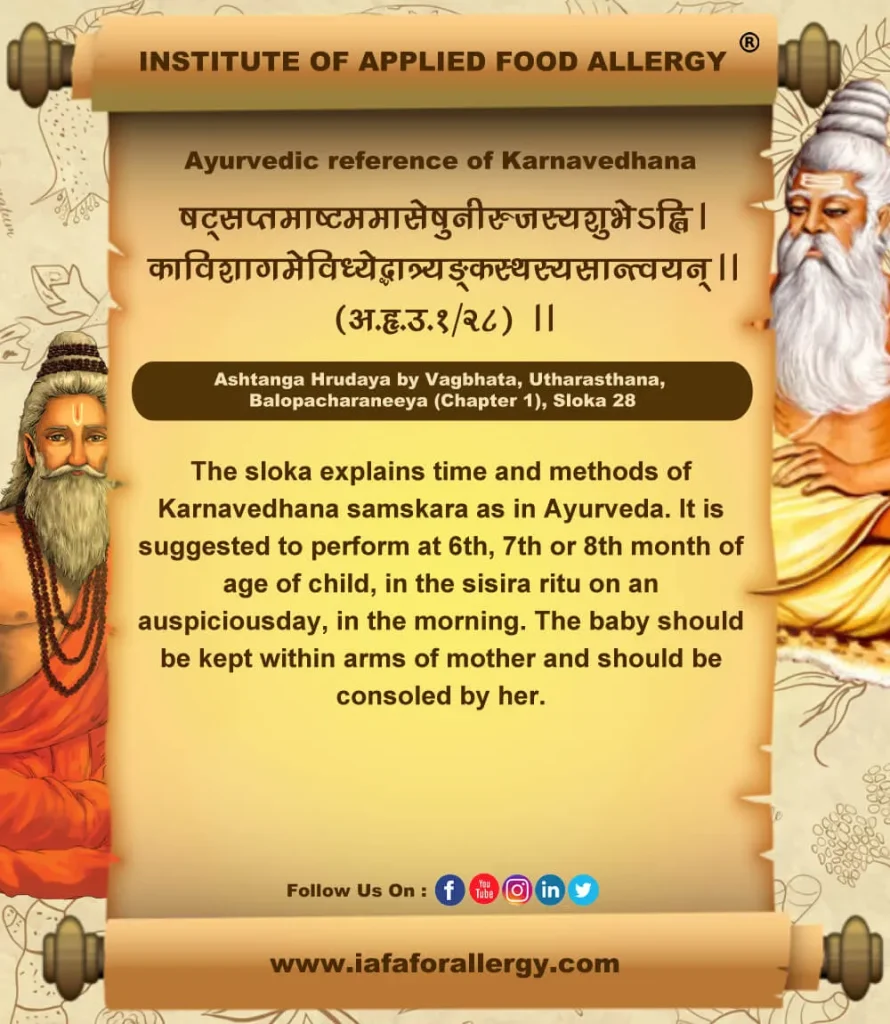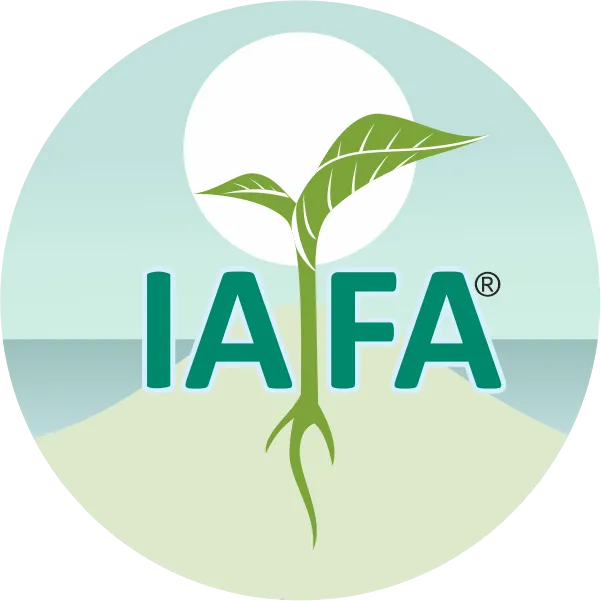On This Page
Samskaras-New Born Cultural Ceremonies
प्राजापत्येनविधिनाजातकर्माणिकारयेत्।।
The term Samskara generally refers to various cultural ceremonies. The important cultural events in an individual’s life from birth to death are grouped under the term samskaras. The number of samskaras varies in different communities. The customary samskaras are 16 in number. All the samskaras are not medically important; rather they possess much of a socio-cultural perspective. Only the medically important ones are dealt by the ancient medical scholars, which are detailed here.
Important Samskaras / Shodasha Samskaras
- Garbhaadaanam
- Pumsavanam
- Seemantonnayanam
- Jaatakarmam
- Naamakaranam
- Nishkraamanam
- Annapraasanam
- Choodaakaranam
- Karnavedhanam
- Upanayanam
- Vedaarambham
- Samaavartanam
- Vivaaham
- Vaanaprastha
- Sanyaasam
- Swargaaroham
1. Jaatakarma (Birth Ceremony/Immediate care of new born)
Prevalent from ancient times, jaatakarma was performed in diverse manners by different groups. Retaining the socio cultural aspects and adding on matters of medical importance, acharya Charaka has explained jaatakarma as below.
- Praasam: The baby is given to ingest a combination of honey and ghee processed with mantras
- Stanapaanam: The right breast should be advanced to be sucked.
- Udaka kumbha sthaapanam: Water pot processed with mantras should be kept along the side of his head.
According to Vagbhata (an ancient Ayurveda scholar),
The first feeding with madhu (honey) and ghrta (ghee) gives sufficient stimulation to gastro intestinal intrinsic nerve plexus, so as to pass meconium at the earliest. This procedure might also have assisted the Acharyas to assess the patency of gastrointestinal tract.
Ayurvedic Reference of Jaatakarma-Birth Ceremony

2. Naamakarana Samskaara (Naming Ceremony)
According to Ashtanga Sangraha naamakarana can be done either on the 10th or 12th day. Kasyapa Samhita and Ashtanga Hrudaya mention 10th day as appropriate for naamakarana.
Preparation of the baby
Mother and the baby having taken bath in water mixed with aromatic drugs, wearing light and clean cloth and ornaments should worship deity and receive blessings from the Brahmins. Then the baby is made to sit over a pad of clothes with the head towards east of north. Thereafter, the father of the baby should utter that the child is offering salutation to the deity and the Brahmins. Having said so, the child should be given two names.
Features of names
Of the two names, one is based on the constellation present at the time of birth and the other should be a popular name for day to day use. The name should not be newly established. It should be similar to that of the preceding generation. The name should be denotable with baby’s star or devotee.
3. Nishkraamana (Outing Ceremony)
It is the ceremony of taking the baby out of the Kumaaraagaara (Baby house). This samskaara enables the baby to acclimatize with the external environment. Kasyapa and Vagbhata (ancient scholars of Ayurveda) consider 4th month as the appropriate time for niskraamana karma. The baby having bathed adorned and worn new clothes and possessing the rakshoghna oushadhas (protective medicines) like mustard, honey, ghee and gorochana on his body should be brought out.
Nishkraamana Vidhi (Method of Outing Ceremony)
The baby along with the mother should be taken out of the Kumaaraagaara and made to enter the temple. After worshiping the burning fire, the Brahmins, God Vishnu etc. and receiving their blessings they should re-enter their own house. Having entered, the physicians should chant mantras for offering prayer. It is for the first time during Nishkraamana karma that the child is exposed to some sort of external environment, mainly to visual and auditory stimuli. This karma helps the physician to confirm the proper functioning of the sense organs especially the eye and the ear.
According to modern view, macular fixation and pupillary adjustment is attained during the same 4th month. During the early weeks eye movement and coordination may not be perfect. However, proper coordination should be achieved by 3-6 months.
4. Upavesana (Sitting Ceremony)
Upavesana is a ceremony of making the baby sit without support in a proposed manner to ensure the activity, growth and development of the baby. Kasyapa samhita suggests upavesana to be done at the age of 6th month. Ashtanga Samgraha mentions the same at 5th month.
Preparation of child
The baby should be bathed, adorned and dressed in intact cloths. Before the ceremony, worshiping of gods and satisfying the Brahmins, by diets and donations has to be performed. The site where the baby is to be seated should be smeared with cow dung. Toys used by the baby are to be placed nearby. The baby should be made to sit for a muhurta (48 minutes) at a time, facing eastward in the middle of the site. After completion of a muhurtha, the child should be carefully lifted up. The whole procedure has to be repeated everyday.
Precautions
- The duration of sitting should not be too long.
- The child should always be assisted and never left alone.
- This need not to be performed while the baby is ill.
- If the baby is made to sit prior to the prescribed age, vitiation of vatadosha occurs which leads to fever, pain hardness of body parts and even arrest offurther growth and development.
Karnavedhana is one of the important samskaras with medical and socio-cultural relevance. In addition to the cosmetic value, it was believed that karnavedhana protects the baby from untoward health complications like grahas. However, this is not medically proven.
The site of the puncture should be in the middle of the ear lobe, slightly towards the cheek, where there is maximum translucency from the light source. This marked by the colour of Laksha rasa. The puncturing should be done with a single and straight stroke; it should neither be high up, sideward nor down ward. If the ear lobe is thicker, Aara sastra should be used instead of needle. By puncturing at the correct site, there will not be severe pain, bleeding and immediate inflammatory reaction, local rise of temperature, swelling and redness.
Post-operative measures
A cotton thread soaked in oil should be drawn through the puncture and the site bathed with unprocessed oil. On each 3rd day the thread should be replaced with thicker ones for widening of the puncture. Daily fomentation, massage, bathing with oil and nourishing foods should be adopted repeatedly.
Puncturing ear may help to activate immune mechanism so as to bring a secondary immunity against several infections.


“Dr. Gupta’s is serving you the best amenity for all your concerns regarding child care and nutrition. Institute of Applied Food Allergy® is extending our hands to ensure all the guidelines that Ayurveda provides to take care of your child’s health. IAFA is the most reliable destination to attain complete health through Ayurveda”.
IAFA, for a real and natural care for your child!!!
– Dr. Sahil Gupta (B.A.M.S., M.H.A.)
Ayurvedic Allergy Specialist
CEO & Founder of IAFA®
At last, Samskaras Management

Trusted by
More than 90,000 Patients

Convenient
at-Home Treatments

9.2 / 10
Customer Satisfaction Score
6. Phalapraasana (Feeding fruits/ fruit juices to baby)
Kasyapa is the only ancient scholar who has explained phalapraasana (feeding fruits/fruit juices to baby). Up to 6 months of age, the child is fed exclusively with breast milk. Thereafter, prior to the introduction of solid food, so as to make the gastro intestinal tract accustomed to it, liquid food is given. Among them, fruit juices are considered ideal. Besides, fruits are best sources of vitamin C and fibrous material.
The baby who is accustomed with madhura rasa (sweet taste) alone will experience difficulty to adjust with tastes like spicy, bitter etc. At this stage, phalapraasana helps the baby to adapt with other tastes through sweetness, sourness etc.in fruits. Kasyapa considers dental eruption as the endpoint of phalapraasana.
Initially, central incisors erupt during 6-7th month. Eruption of teeth is indicative of GIT maturity to digest, absorb and assimilate nutrients. The gastro-intestinal functions vary markedly with the maturity of the infant. The current concept of introduction of solid food at 6months of age is strict lyon the basis of nutritional requirement of the baby.
7. Annapraasana (Feeding Ceremony)
It is the samskaara related to feeding of solid food for the first time to the baby.
It is evident from this reference that the weaning is not at all a novel concept. However, this does not mean that the baby should be totally detached from breast milk from the age of 8 months (i.e. age of teeth eruption). Ayurveda generally advices breast feeding up to 2 years of age. (ksheerannaada -up to2 years).According to Kasyapa, 10thmonth is the appropriate time for annapraasana. In Ashtanga Sangraha, Vagbhata opines 6thmonth to be the time for annapraasana. Susruta (ancient Ayurvedic scholar) also comments that 6thmonth is the appropriate time for annaprasana.
Procedure
Annapraasąna should be done on an auspicious day after worshiping gods and the Brahmins by cereals, meat and donations, reciting mantras, smearing the site with cow dung, spreading darbha grass, decorating with fragrances and garlands and placing signs of swastika in four places, preparing all the articles for making toys. After that, the physician gets seated facing east and the child facing west. After igniting fire, a delicious diet comprising of cereals and drinks made from meats of laavaka, kapinjala, tittiri, charanaayudha should be first offered as oblations to fire along with enchantment of mantras. After oblation, the remaining food made soft by mashing, is given to the child (3/5 times) in a quantity equal to that of a thumb (angushta maatra). After feeding, the baby should be cleaned.
Ayurvedic reference of Annapraasana-Feeding Ceremony

Frequently Asked Questions
Question: What are Samskaras?
Answer: Samskaras refer to certain cultural ceremonies prevailed in ancient India. It has several socio-economic importance as well as medical concerns.
Question: At what age weaning can be started according to Ayurveda?
Answer: Most scholars of Ayurveda opine that once tooth eruption has occurred, solid foods can be introduced to the baby. At about 6th month of age, fruit juices can be initiated.
Question: What is the importance of sitting ceremony?
Answer: Sitting ceremony is advised to perform at 6th month of age. It helps the baby to sit without support and to improve overall neuromuscular development.
Was this Page Helpful?
So IAFA Guidance to Samskaras (Cultural Ceremonies Prevailed in Ancient India) to Uplift Your Child’s Growth is Just 3 Steps Away!

01. Connect With Us
Book an appointment to share queries of your child health.

02. Consult With Us
Consult with Ayurvedic Pediatrician of IAFA®.

03. Root Cause Treatment
Get an accurate diagnosis and treatment for your child.
Case Studies
Real Case Studies of Successfully Treated Patients from All Around the World by IAFA Ayurveda®

9 Year Old Female Patient Recovered from Chronic Allergic Bronchitis – A Case Study
This case study presents a 9-year-old female patient who has successfully recovered…

12-Year-Old Child Recovered from Sun Allergy and Polymorphous Light Eruption (PMLE) – A Case Study
This is a case study of a 12-year-old child who has successfully…

40-Year-Old Female Patient Recovered from Dyshidrotic Eczema and Onychomycosis – A Case Study
This case study highlights the successful recovery of a 40-year-old female patient…

40-Year-Old Female Patient Recovered from Urticaria and Angioedema – A Case Study
This case study focuses on a 40-year-old female patient who has successfully…
Read More Articles

Bed Wetting (Shayyamutra)
Bedwetting is an embarrassing habit in some children where they are unable…

Attention Deficit Hyperactivity Disorder – ADHD (Vatika Unmada)
Contact IAFA Ayurveda® to get safe and natural remedies for the treatment…













